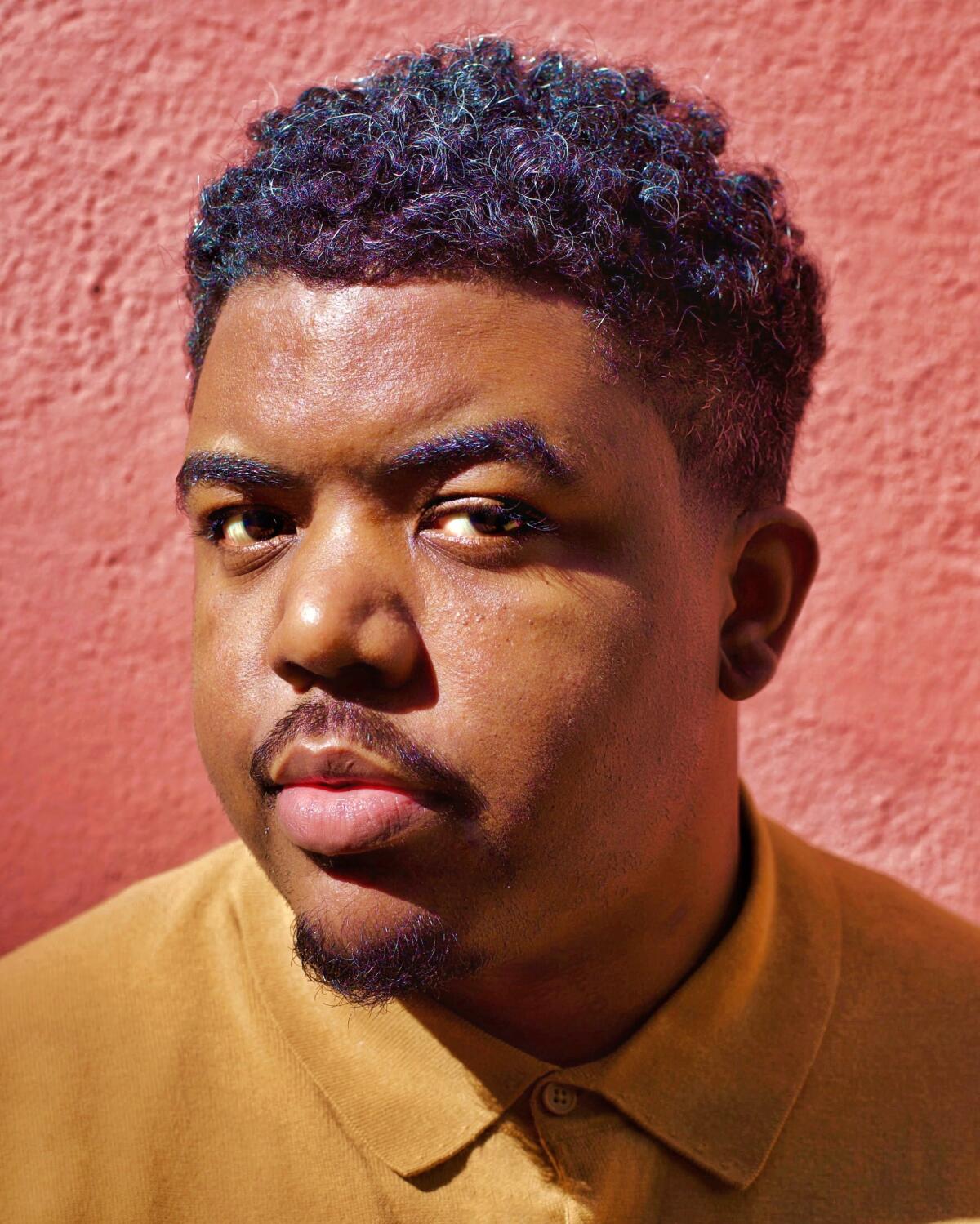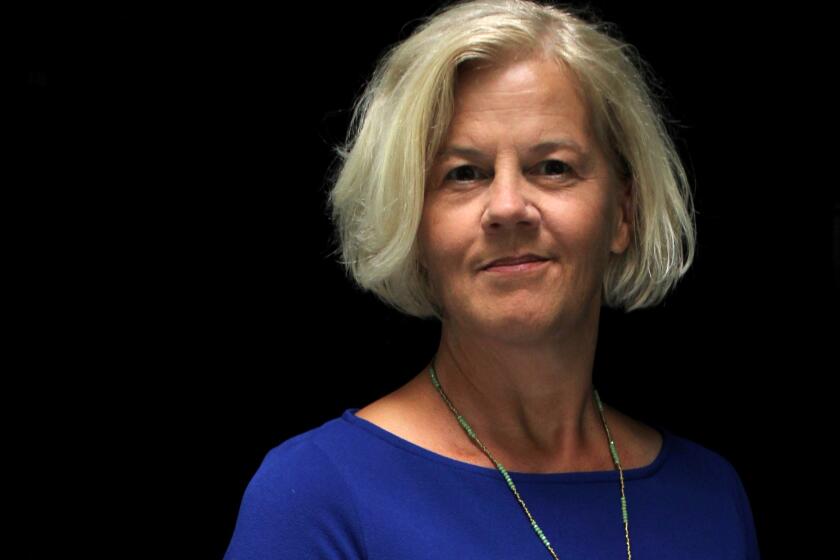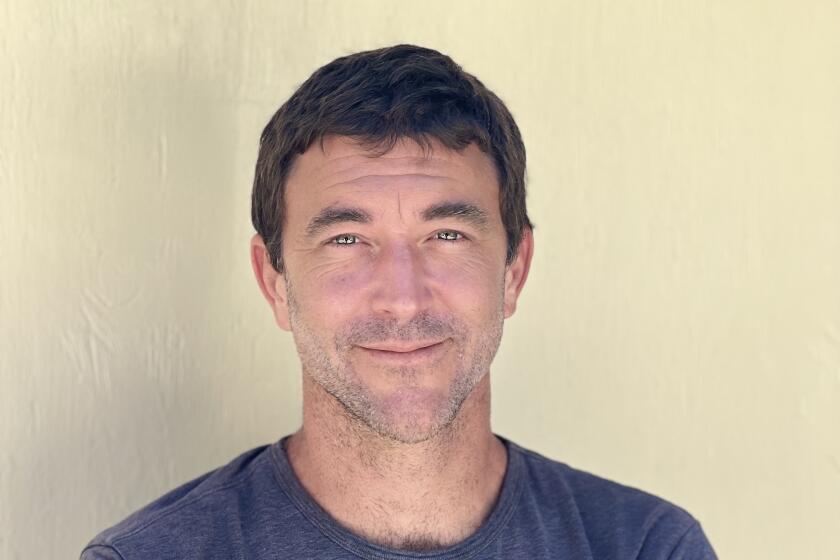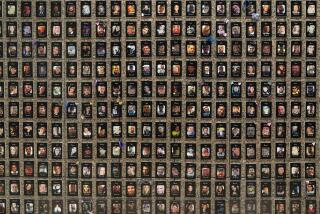No such thing as a ‘crackhead’: Drawing stories and lessons from the last drug epidemic

On the Shelf
When Crack Was King: A People's History of a Misunderstood Era
By Donovan X. Ramsey
One World: 448 pages, $30
If you buy books linked on our site, The Times may earn a commission from Bookshop.org, whose fees support independent bookstores.
“I’ve been all over the country and have interviewed hundreds of people whose lives were touched by crack, but never have I met a ‘crackhead,’” Donovan X. Ramsey writes toward the end of his first book, “When Crack Was King: A People’s History of a Misunderstood Era.” He continues: “Their stories were buried by that word.”
The debut is an attempt by Ramsey, a former staff writer for The Times, to unearth some of those stories and put them in context. To that end, he interweaves straight historical writing with the tales of four individuals whose lives were touched by crack in its ’80s heyday: Kurt Schmoke, the former Baltimore mayor and early decriminalization advocate; Elgin Swift, a Yonkers boy with a drug-addicted father; Lennie Woodley, an ex-addict and sex worker; and Shawn McCray, who co-founded the notorious Newark, N.J., trafficking group the Zoo Crew. The resulting work manages to convey the scope of history while also remaining grounded in the specific and personal. And it feels particularly relevant as America stares down another drug epidemic with no clear end in sight.
Ramsey spoke by phone with The Times while taking a pre-book launch vacation in Florence, Italy. This interview has been edited and condensed for length and clarity.
Beth Macy nailed down the roots of the opioid crisis in “Dopesick.” In her tireless followup, “Raising Lazarus,” she’s on the hunt for solutions.
We’re going to start at the end, because in one of the last chapters of the book, you write about how putting this book together triggered some PTSD. Why was this subject so important to you that even when it was hurting you, you felt like you had to push through and write it anyway?
I grew up in a neighborhood that was hard hit by the crack epidemic. I had lots of questions about what my community was like before. Why us? And what happened to people who disappeared?
It’s also something I wrote because I lived alongside people who struggled during that period, and I know that I am no better or different than them. I feel like I have to take whatever skill I have as a journalist and put it toward telling those people’s stories. Making them real.
I like to think that as tough as writing [the book] was, it reminded me of how resilient I am, how resilient the Black community is. And there’s a lot we can learn from the ways that the communities hardest hit survived the crack epidemic. Many challenges still live with us today. We have an ongoing opioid epidemic that we haven’t been able to get our hands around. And there are actually lessons for that in the ways communities survived crack.
What are some of those lessons?
We don’t have a healthcare system that accounts for addiction, [or] for mental illness. We need those wraparound addiction mental health services. But we also need harm reduction programs that keep people alive while they’re figuring out how to get clean.
Each of the characters in my book — what really kept them alive were not big programs and projects, but people doing little things. And those little things add up to something of a safety net.
And lastly, I would say that we have to invest in individuals that are doing the work in their communities. Churches and activists that initiated programs on their own had tremendous impact, but it’s not where the government invested its resources. The government invested in policing and criminalization.
In ‘Children of the State,’ award-winning writer Jeff Hobbs spent months inside juvenile facilities. It was an experience of heartbreak and hope.
The book looks both backward and forward — you wanted to know what your community was like before crack, but it also points to so much of what’s happened since, right? When you look at, say, mass incarceration. Well, why did that happen? Oh, the war on drugs.
Yeah, and also, certain other ideas. Believe it or not, I was considered a problem kid in school. What I didn’t realize was that there was this entire apparatus built around marginalizing and criminalizing Black children.
It felt like many of the educators that I grew up with, most of whom were white, believed that there was something wrong with me. And I understand now that that was a spirit of the era. People’s beliefs about Black communities, Black families, Black children, were sewn into my education.
When I was a kid, I came to the conclusion that being Black is kind of like being famous, in the sense that you go places and people think they know you.
The book focuses on four stories of people who in some ways were central to that time and how it unfolded. Why did you choose that structure?
One of the things I really wanted to put forward is that these are people who are becoming themselves, as we all do. And they’re doing it under all of these forces. They’re making good and bad choices. But they are human and susceptible to the tides of life just like anybody else. That’s why it was important for me to include more than one personal narrative: So you can see four different people making different — and sometimes the same — choices.
One of the great tragedies of the crack epidemic for me is the ugliness it unearthed about this country’s relationship to Black people, brown people, poor people. I wrote the book because I think that there’s a view from the bottom of our society that the most marginalized have that we need to appreciate, because the most marginalized people know something about us that we never take time to hear and understand.
The 14 most essential works of nonfiction include histories by Kevin Starr, Carey McWilliams, Reyner Banham and, ruling them all, Mike Davis’ ‘City of Quartz.’
It must have been tough, hearing all of these stories of the worst parts of people’s lives for years on end.
It’s really tough. I used to think of myself, in my journalism, as somebody who could alchemize people’s worst stuff and not be affected by it. But this took a lot out of me. So I’ve been pacing myself a lot — doing things like taking a break.
And we can do that, right? As readers, we can pace ourselves. But also as a society, when it comes to how we care about issues. We don’t have to live in something, but we can give according to our capacity. I sound like Jesse Jackson, but I do believe that.
I’m so excited for this book that I spent five years working on. I’m excited for people to read it in this moment, because I think that we are in a moment like the one that birthed the crack epidemic. People were retreating from a period of activism and investment in causes, and it was all about every man for himself.
When I look around today, I see a lot of people who are getting over the devastation of COVID, and financial stuff. The political exhaustion. People want to check out. People want to escape. And I just hope this book can be an intervention to say: Let’s not do that again.
More to Read
Sign up for our Book Club newsletter
Get the latest news, events and more from the Los Angeles Times Book Club, and help us get L.A. reading and talking.
You may occasionally receive promotional content from the Los Angeles Times.











